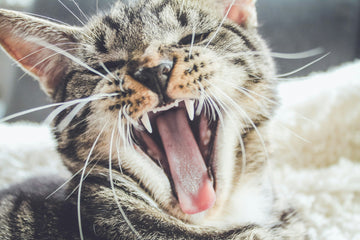Understanding, Supporting, and Building Trust with Your Feline Friend
Cat aggression often feels unpredictable and unsettling—one moment you’re stroking your cat, the next you’re dodging claws or teeth. While cats are generally smaller than dogs, their aggression can be equally dangerous due to the sharp claws, fast reflexes, and even the risk of infection from scratches.
But here’s the key: aggression in cats is rarely random. It’s a form of communication. Learning how to understand and respond to it is essential for both your cat’s well-being and your own peace of mind.
First, Rule Out Medical Issues
Before addressing behavioral causes, it’s crucial to visit your vet. Pain, hormonal changes, neurological problems, or underlying illnesses can all manifest as sudden aggression. If your cat is healthy, you can then begin to explore environmental or emotional triggers.
Understanding the Types of Cat Aggression
Most feline aggression falls into two broad categories:
🐱 Offensive Aggression
-
Ears forward
-
Tail stiff or puffed
-
Staring directly
-
Arched back, growling, approaching you
This type is about asserting control—your cat may feel threatened or territorial and is trying to scare off the perceived threat.
🐱 Defensive Aggression
-
Crouching low
-
Tail tucked
-
Ears flat
-
Hissing, spitting, avoiding eye contact
This reaction is fear-based. Your cat feels cornered and is trying to protect herself.
Understanding the difference helps you respond appropriately—either by giving your cat space or working to reduce perceived threats in the environment.
Find the Trigger
Common triggers include:
-
Overstimulation (especially from petting)
-
Changes in routine or home environment
-
A new pet or person
-
Lack of mental and physical stimulation
-
Unmet instinctual needs, like hunting or chewing
Cats are creatures of habit and instinct. When something disrupts their world—even something subtle—it can easily lead to reactive behavior.
What You Can Do to Help
Once you understand your cat’s triggers, you can begin making small adjustments to improve their comfort and reduce stress.
1. Create a Safe Space
Cats need somewhere quiet where they can retreat. A box, a high perch, or even a covered bed gives your cat control over her environment—which naturally reduces anxiety.
2. Give Them Something to Do
A bored or under-stimulated cat can easily become frustrated, and frustration often spills over into aggression. Interactive toys, puzzle feeders, and safe chew objects are great for mental engagement.
We’ve found that natural chewing toys, like the ones in Bobopal’s Healthy Companion set, can be surprisingly helpful. They give cats a physical outlet for energy while supporting dental health. Chewing—especially when combined with stimulating scents like silvervine—can be calming and satisfying, especially for cats prone to stress or tension. It's a simple addition to your cat's environment that can have a soothing effect over time.
3. Respect Their Boundaries
If your cat walks away or signals discomfort, don’t push it. For some cats, aggression is simply their way of saying “enough.” Wait for them to come to you when they’re ready.
4. Offer Window Views and Perches
Cats are natural observers. Giving them a good vantage point to watch birds or squirrels outside can keep their minds busy and reduce the likelihood of misdirected aggression indoors.
Be Patient—Change Takes Time
Managing cat aggression isn’t about quick fixes. It’s about building trust, reading subtle cues, and creating an environment that supports your cat’s physical and emotional needs.
Toys, quiet spaces, routine, and gentle interaction go a long way. And sometimes, a small thing—like letting your cat chew, hide, or watch the world in peace—can help more than you’d expect.






